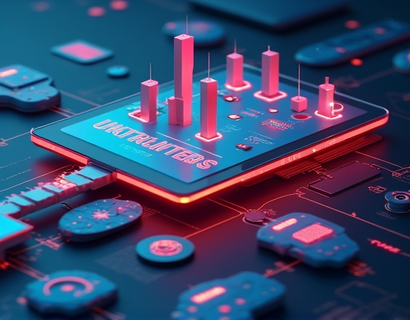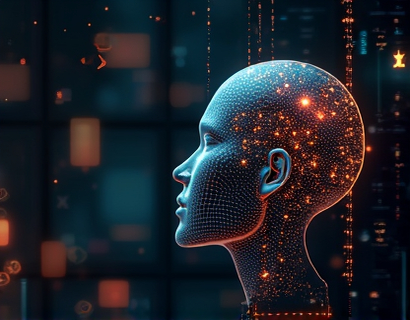Exploring the Frontier of Digital Interaction: The Evolution of AI Chat Avatars
The digital landscape is rapidly evolving, and at the forefront of this transformation are AI chat avatars. These sophisticated entities are redefining how humans interact with technology, offering a new dimension of engagement that is both intuitive and enlightening. This article delves into the world of AI chat avatars, exploring their capabilities, applications, and the profound impact they are having on digital communication.
The Rise of Conversational AI
Conversational AI has been a topic of fascination for decades, with early attempts dating back to the 1960s. However, it is only in recent years that significant advancements have made AI chat avatars a reality. These avatars are not just about automating customer service or providing basic information; they are designed to engage in meaningful conversations, understand context, and adapt to user preferences. The technology behind these avatars combines natural language processing (NLP), machine learning, and cognitive computing to create a seamless and interactive experience.
Understanding AI Chat Avatars
An AI chat avatar is a digital representation designed to simulate human-like conversation. These avatars use advanced algorithms to interpret and generate text or speech, allowing them to engage users in a dialogue that feels natural and intuitive. The core components of an AI chat avatar include:
- Natural Language Understanding (NLU): This enables the avatar to comprehend user input, including nuances like sarcasm, idioms, and context.
- Dialog Management: This component manages the flow of conversation, ensuring that the dialogue remains coherent and relevant.
- Natural Language Generation (NLG): This allows the avatar to generate responses that are contextually appropriate and engaging.
- Personality and Character Design: To make interactions more relatable, avatars can be given specific personalities and traits.
These components work together to create a chat avatar that can handle complex conversations, provide personalized recommendations, and even exhibit emotional intelligence.
Applications of AI Chat Avatars
The applications of AI chat avatars are vast and varied, spanning multiple industries and use cases. Here are some of the key areas where these avatars are making a significant impact:
Customer Service and Support
In the realm of customer service, AI chat avatars are revolutionizing the way companies interact with their customers. These avatars can handle a wide range of inquiries, from simple FAQs to complex issue resolution, 24/7 without the need for human intervention. This not only enhances customer satisfaction but also reduces operational costs for businesses. For instance, a chat avatar can guide a user through troubleshooting steps, provide real-time updates on orders, or even assist in making purchases.
Education and Learning
AI chat avatars are also transforming education by providing personalized learning experiences. These avatars can act as virtual tutors, offering explanations, answering questions, and adapting to the learning pace of each student. They can simulate real-world scenarios, provide instant feedback, and even engage in discussions to deepen understanding. This makes education more accessible and effective, especially in remote learning environments.
Healthcare and Wellness
In healthcare, chat avatars can play a crucial role in patient care and support. They can provide medical information, assist with appointment scheduling, and even offer basic mental health support. For example, a chat avatar can guide users through stress management techniques, provide reminders for medication, or offer reassurance and support to those dealing with chronic conditions. This not only improves patient outcomes but also alleviates some of the burden on healthcare professionals.
Entertainment and Media
The entertainment industry is another area where AI chat avatars are making waves. These avatars can enhance user experiences in gaming, virtual reality, and interactive storytelling. They can create immersive narratives, respond to player actions, and even collaborate with human actors to produce dynamic and engaging content. For instance, a chat avatar in a video game can serve as a companion, providing guidance, hints, and even engaging in side quests.
Advantages of Using AI Chat Avatars
The benefits of integrating AI chat avatars into various applications are numerous and compelling:
Efficiency and Cost-Effectiveness
Chat avatars can handle a high volume of interactions simultaneously, reducing the need for extensive human resources. This leads to faster response times and lower operational costs. Businesses can allocate their human staff to more complex tasks, improving overall efficiency.
Personalization and User Engagement
AI chat avatars can analyze user data to provide personalized experiences, recommendations, and support. This level of personalization enhances user engagement and satisfaction, leading to stronger customer relationships and higher retention rates.
Availability and Accessibility
Unlike human agents, chat avatars are available around the clock, ensuring that user queries are handled at any time. This 24/7 availability is particularly beneficial for global businesses and services that cater to diverse time zones. Additionally, chat avatars can be integrated into various platforms, including websites, messaging apps, and virtual reality environments, making them highly accessible.
Continuous Learning and Improvement
Through machine learning, AI chat avatars can continuously learn from interactions, improving their performance and accuracy over time. This means that the more users interact with the avatar, the better it becomes at understanding and addressing their needs. This self-improving capability ensures that the avatar remains relevant and effective.
Challenges and Considerations
While AI chat avatars offer numerous advantages, there are also challenges and considerations that need to be addressed:
Ethical and Privacy Concerns
The use of AI chat avatars raises ethical questions, particularly around data privacy and user consent. It is crucial for developers to implement robust privacy measures, ensure transparency in data usage, and comply with regulations such as GDPR. Users should be informed about how their data is collected, stored, and used.
Limitations in Emotional Intelligence
Despite advancements, AI chat avatars still have limitations in understanding and replicating human emotions. While they can simulate empathy and emotional responses, they lack the genuine emotional depth of humans. This can sometimes lead to misunderstandings or a sense of detachment in interactions. Developers are continually working to bridge this gap, but it remains an area of active research.
Technical Challenges
Creating a chat avatar that can handle complex, context-rich conversations requires significant technical expertise. Issues such as ambiguity, sarcasm, and cultural nuances can be challenging to program. Additionally, ensuring that the avatar's responses are coherent and contextually appropriate across diverse scenarios is an ongoing challenge.
The Future of AI Chat Avatars
The future of AI chat avatars is promising, with ongoing research and development pushing the boundaries of what these entities can achieve. Here are some trends and advancements to watch:
Enhanced Emotional Intelligence
As research progresses, AI chat avatars will become better at understanding and responding to human emotions. This will involve integrating more sophisticated models of emotional recognition and response, making interactions more natural and empathetic.
Multimodal Interaction
Current chat avatars primarily focus on text-based interactions, but the future holds multimodal capabilities. Avatars will be able to understand and respond to voice commands, facial expressions, and even gestures, creating a more holistic and intuitive user experience.
Integration with IoT and Smart Devices
AI chat avatars will increasingly integrate with the Internet of Things (IoT) and smart devices, enabling seamless interactions across various environments. For example, a chat avatar could control smart home devices, provide real-time updates, and assist with daily tasks, all through natural language interactions.
Collaborative AI Systems
The next generation of chat avatars will not work in isolation but as part of collaborative AI systems. These systems will integrate multiple AI components, such as computer vision, natural language processing, and predictive analytics, to provide more comprehensive and intelligent support.
Conclusion
AI chat avatars represent a significant leap forward in digital interaction, offering a blend of efficiency, personalization, and engagement that traditional interfaces cannot match. As the technology continues to evolve, these avatars will play an increasingly important role in various industries and aspects of daily life. Whether in customer service, education, healthcare, or entertainment, AI chat avatars are poised to transform how we interact with technology, making digital experiences more intuitive, accessible, and enriching.























